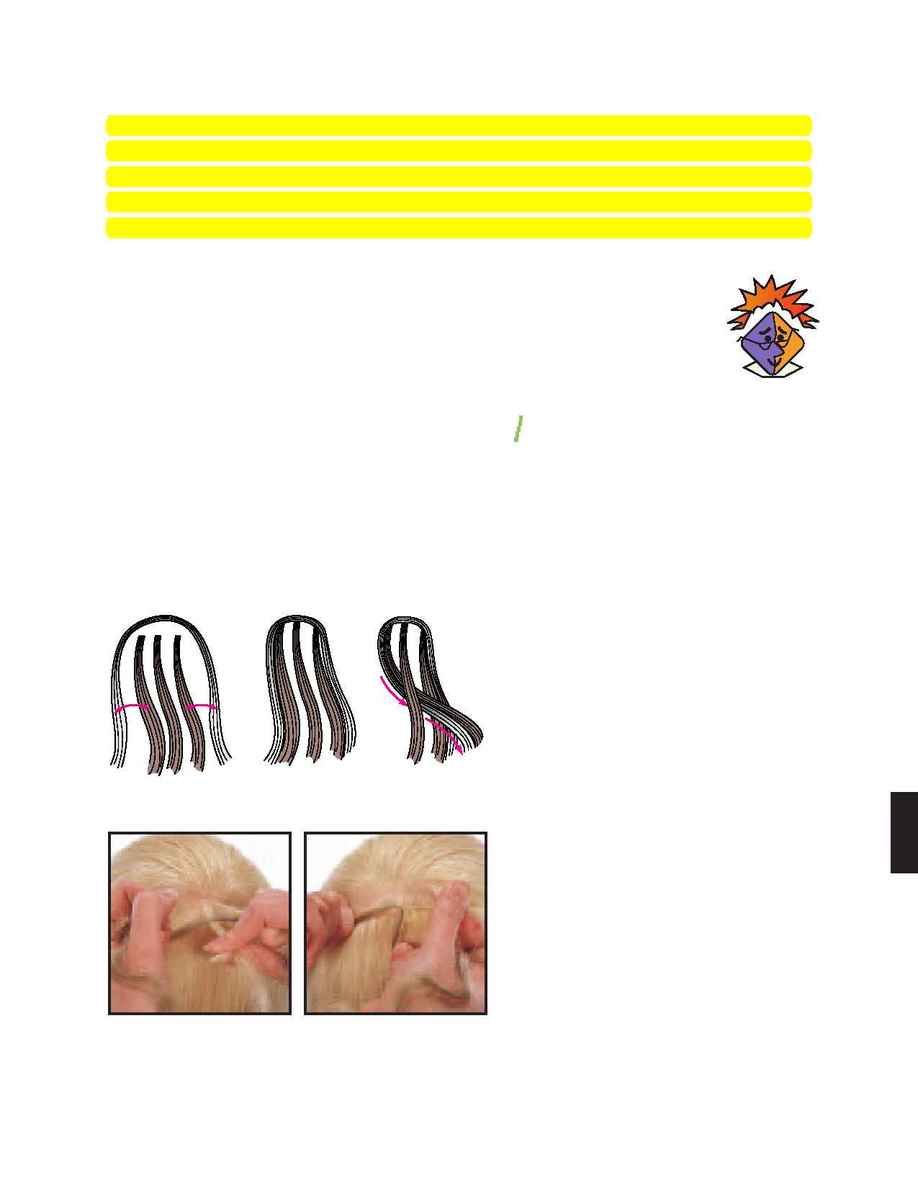
HAIR ADDITIONS
Unlike wigs and hair pieces, hair additions consist of loose hair fiber intended for attachment to the
base of the client's own hair. Hair additions offer a whole new spectrum of designing options for you
and your clients. You can add length, density, texture and/or color, all over, or in just the right places
to accent your design. Match the color and texture of your client's hair for the most natural-looking
results, or create stunning new effects by introducing contrasting elements in the hair additions.
Hair Addition Methods
On these pages, you will find highlights of several of the most popular and
commonly used methods of creating hair additions. Keep an eye on industry
publications to learn about new methods that are being developed on an
ongoing basis.
Off-the-Scalp Braiding, Loose Hair
/
Fiber
Off-the-scalp braiding uses a standard three-strand braiding technique to
attach loose fiber or hair. It is achieved by incorporating the hair or fiber,
along with the natural hair, as it is braided. The additional hair can be added
to one side or both sides of the braid.
The size of the base is determined by the
desired thickness of the braid. Divide the
base into three sections. Then select the
length and density of the hair to be
added. Position the addition as shown,
joining it with the outside strands. An
underbraid technique is used in this
example. Grasp the center strand with
the thumb and index fingers of your left
hand. Then turn your right hand in
order to cross the outside right strand
(with the additional hair) under. This
now becomes the center strand. Next,
turn your left hand to cross the left strand
(with additional hair) under. This now
becomes the center strand. Continue this
alternating pattern to the ends.
415
WIGS AND HAIR ADDITIONS
1
1
"For more information
and step-by-step techni-
cals on the techniques
highlighted here, look
at Pivot Point's Hair
Additions course book."
